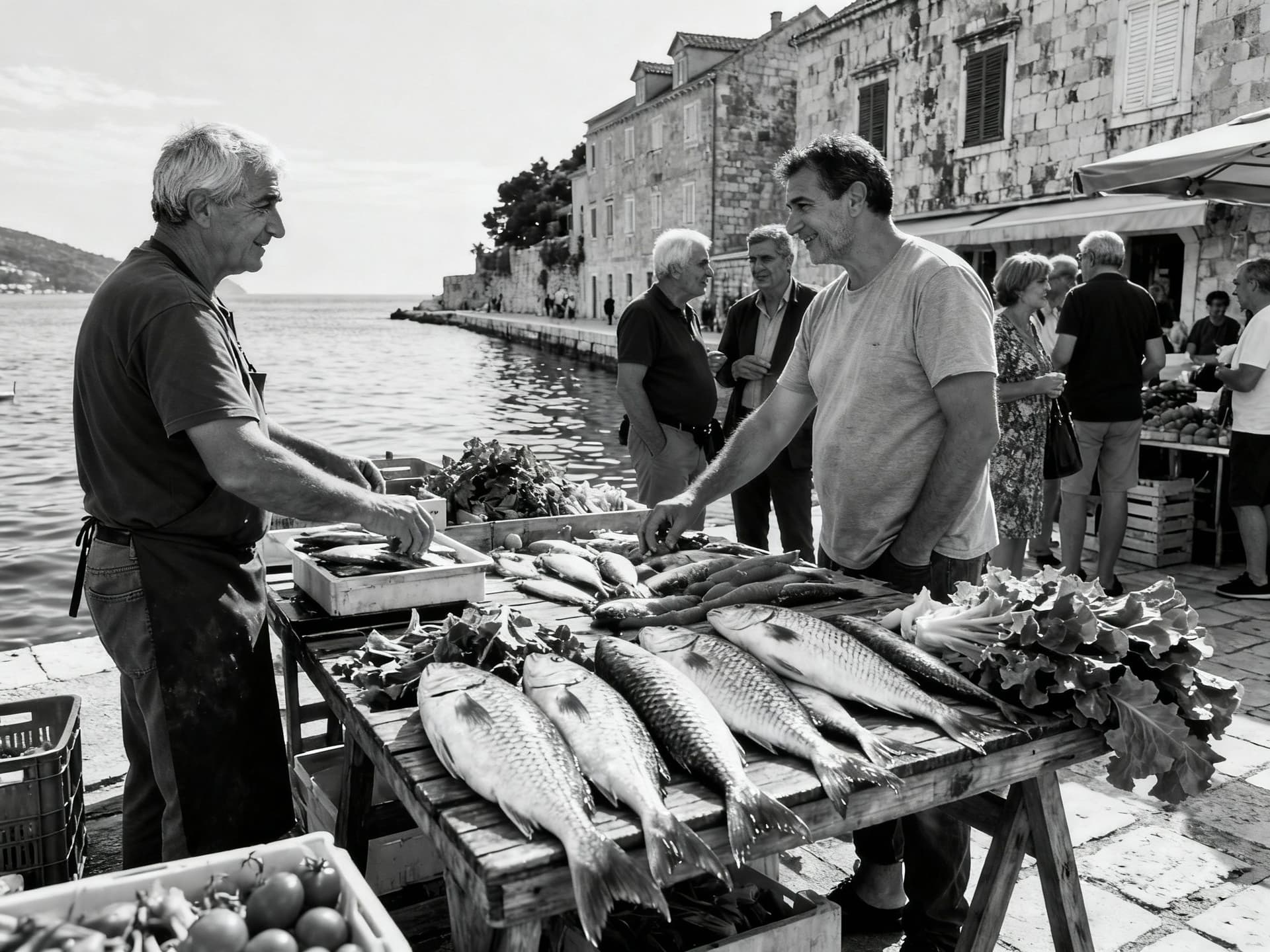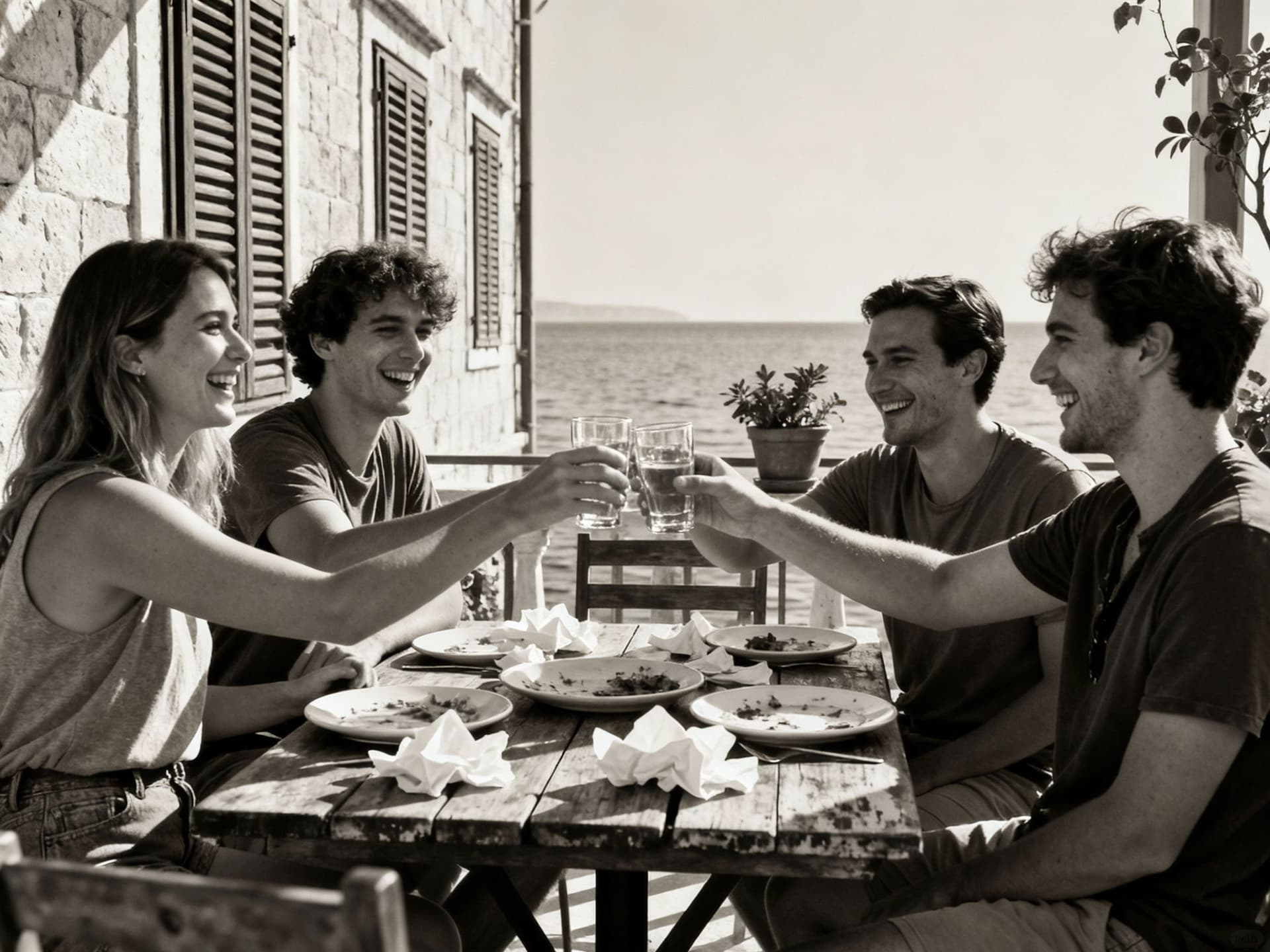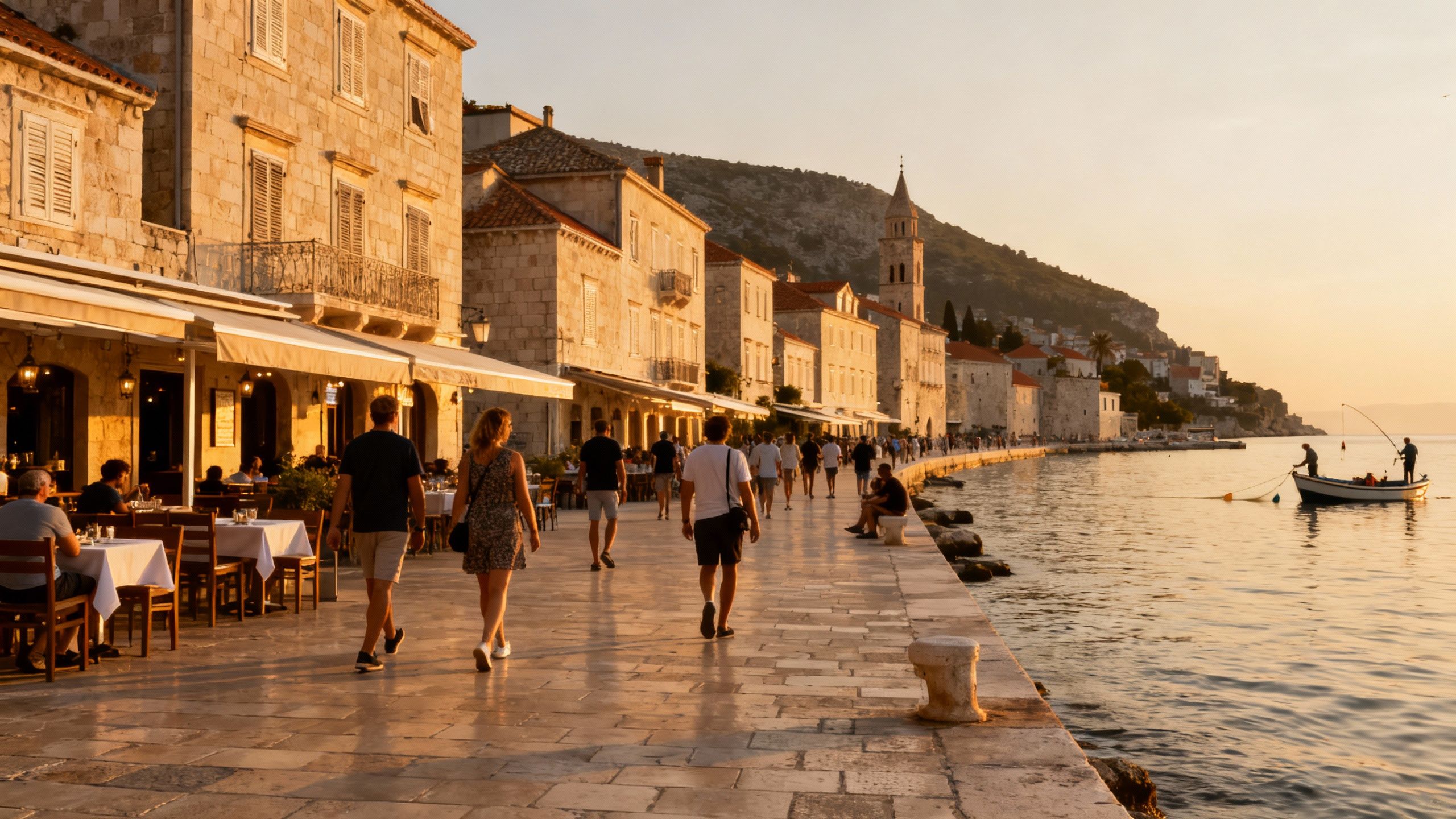The Adriatic’s Quiet Truth: Transparency & Local Realities
Fall in love with Dalmatian mornings — then use cadastral extracts, transaction data and local checks to avoid transparency traps that can erode lifestyle value.
Imagine waking on a stone‑paved street in Split, buying morning burek from a stall on Marmontova, and watching fishermen unload their catch at the Riva. Croatia’s Adriatic life feels slow, tactile and exacting — and those sensory details shape real estate decisions as much as prices.
Living the Croatia lifestyle — what you actually buy

Daily life in Croatia blends coastal ritual with continental practicality. In Rijeka you’ll hear tram bells and market chatter; in Hvar mornings are for slow espresso and late afternoons for island swims. That rhythm informs what international buyers prize: small terraces, secure parking, thick stone walls that cool interiors in summer and retain heat in winter.
Neighborhood spotlight: Split’s Veli Varoš and Zagreb’s Jarun
Veli Varoš sits below the Old Town’s ramparts: narrow alleys, local konobas and sea views from stairwell windows. Jarun in Zagreb is green, active and quietly residential — lakes, weekend markets and a different pace that appeals to families. Both areas show why lifestyle micro‑choices drive buyers toward specific streets rather than broad regions.
Food, markets and seasonal life that change property use
From Dolac market stalls in Zagreb to Pula’s konobe, food culture shapes use: long terraces for summer dining, ground‑floor storage for preserves, and proximity to markets matter. Festival seasons — from tiny island music weekends to Dubrovnik’s summer programme — boost short‑term rental demand and temporarily change neighbourhood dynamics.
- Morning espresso on the Riva (Split), late‑summer olive festivals (Istria), Dolac market runs (Zagreb), island ferry cadence (Hvar), local konobas with fixed‑menu lunches (Vis), sea‑facing terraces with shutters (Dalmatia)
Making the move: practical realities that preserve the lifestyle

The dream of Adriatic mornings meets a market with real momentum and real friction. House price indices show strong annual growth in 2024–2025, while transaction counts can fall as buyers pause for certainty. Understanding the data and local disclosure norms protects both lifestyle and capital.
Property types and how they map to daily life
Stone townhouses deliver authenticity but often need upgraded wiring, insulation and drainage. New builds offer predictable systems and warranties but can be set back from lively streets. For island buyers, look closely at water access, cisterns and technical connection certificates — these are the details that determine whether your terrace is a joy or constant maintenance.
Work with experts who translate lifestyle into property specification
- Hire a local agent with on‑the‑ground references; request builder guarantees and inspection reports; commission a geodetic survey for plot boundaries; insist on a utilities certificate and up‑to‑date cadastral extracts; verify past short‑term rental permissions if you plan to rent; work with a notary who understands foreign buyer issues.
Insider knowledge: transparency, red flags and what expats wish they'd known
The biggest surprises for newcomers are not aesthetic — they are procedural. Croatia has been tightening property‑related tax rules and digitising records, shifting burdens onto property in 2025. That changes holding costs and how locals use housing stock, with possible long‑term effects on short‑term rental supply and neighbourhood character.
Common transparency red flags to watch
- Discrepancies between cadastral maps and on‑site boundaries; missing or outdated building permits; inconsistent utility billing histories; prior unregistered renovations; ambiguous short‑term rental records; seller use of nominee companies without clear beneficial owner records
How to use public data: look beyond prices. Transaction volumes, regional price divergence and tax‑policy shifts reveal where the market’s cooling or concentrating. For example, transaction counts fell in early 2025 even as prices rose — a sign of scarcity and buyer caution that matters when timing offers.
Cultural notes that affect transparency
Local bargaining is direct; owners often expect negotiation beyond listed price. Some renovations were completed informally decades ago. Asking a neighbour about a property’s history is still one of the fastest ways to uncover unreported issues. Respectful curiosity yields facts many documents miss.
Actionable next steps: combine lifestyle scouting with data checks. Use national indices to confirm regional trends, inspect cadastral extracts and utility certificates, and require seller declarations about rental history. If numbers and neighbourhood stories disagree, pause and investigate.
- Visit the neighbourhood at different times; request the official cadastral extract (izvadak); commission a technical inspection; review tax and utility payment history; confirm beneficial ownership if corporate sellers are involved; plan for seasonal maintenance costs (sea salt, humidity).
Conclusion — love the life, require the facts
Croatia offers a life that is immediate: markets, sea, neighbourly rituals. But that immediacy does not replace thorough due diligence. Bring a short list of lifestyle non‑negotiables, then ask hard questions of documents and local experts. Do that and the Adriatic lifestyle becomes an ownership reality rather than a postcard.
British expat who relocated to Marbella in 2012. Specializes in rigorous due diligence and cross-border investment strategies for UK and international buyers.


